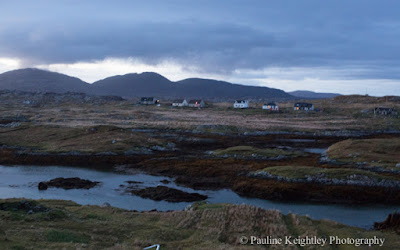What Happened to the Glasgow Saltmarket slums?
“It is a revolting State of Filth and Squalor”
Photographer
Thomas Annan photographed the filthy Glasgow slums in the Saltmarket.
He also shot images of the Glasgow cathedral and the building of the Loch Katrine reservoir.
And today near the Saltmarket Glasgow is the upmarket area of the yuppie Merchant City. How times have changed!
In the mid
18th century (1750) – the Saltmarket had the Glasgow college and it
was the place to be, the Dear Green Place was like Bond street or
Saint-Germain.
The
Saltmarket was originally home to the fullers – scourers of woollen cloth.
After the Union
of 1707, from 1750 – 1850, the Saltmarket changed utterly - and the population rose from 30,000
to 400,000.
Displaced
people from the Highlands and Ireland flooded here and the
Salmarket turned into overcrowded, filthy slums. Their closes were dark and
damp Disease was rife. The only time
there as running water was when it rained, and mortality rates were the highest
in Scotland.
Alan Taylor writes
of these disturbing photos in the Herald. “People with nothing to do and nowhere
to go’” Overwhelming impression was one of hopelessness and decay. “There is
none of the colour of a Neapolitan back street or the chaos of a Mumbai Shanty
town. There is no movement or energy."
A Police
superintendent wrote at the time –
In 1842, a government report spelled out
the scale of the problem as ever more people flooded in from the Highlands and
Ireland:
“In the very centre of the city there is
an accumulated mass of squalid wretchedness, which is probably unequalled in
any other town in the British dominions. In the interior part of the square,
bounded on the east side by the Saltmarket, on the west by Stockwell-street, on
the north by Trongate, and on the south by the river, and also in certain parts
of the east side of High-street ... there is concentrated everything that is
wretched, dissolute, loathsome, and pestilential. These places are filled by a
population of many thousands of miserable creatures. The houses in which they
live are unfit even for sties, and every apartment is filled with a promiscuous
crowd of men, women and children, all in the most revolting state of filth and
squalor.”
The Highland
Clearances and De-population of the Highlands took place twice, in the 18th
and 19th centuries. The Landowners forced the existing people from
the land they had farmed for generations, to make way for sheep grazing. The
smoke from burning roofs filled the skies, to prevent reoccupation. All the
homes would burn for 6 days….We drive still through areas with burnt out shells
of cottages. People fled to the coast and to Glasgow or emigrated.
Annan was
commissioned to produce a series of photos from 1868 – 1871 of the centre of
Glasgow. He made 31 images that show how appalling the conditions were for many
poor Glaswegians.
The Glasgow
college was demolished and moved to the Glasgow Westend.

As an
example of ... "clearing" ... the Duchess of Sutherland will suffice
here. This person, well instructed in economy, resolved ... to turn the whole
country ... into a sheep-walk. From 1814 to 1820 ... 15,000 inhabitants, [or] about 3,000 families, were
systematically ... rooted out. All their villages were destroyed and burnt, all
their fields turned into pasturage. British soldiers enforced
this eviction, and came to blows with the inhabitants. One old woman was burnt
to death in the flames of the hut which she refused to leave. Thus [the Duchess
of Sutherland] appropriated 794,000 acres [321,320 hectares] of land that had
... belonged to the clan.
She assigned to the expelled inhabitants about 6,000 acres [2,428 ha] on
the sea-shore – two acres per family. The 6,000 acres had until this time
lain waste, and brought in no income to their owners. The Duchess ... actually
went so far as to let these at an average rent of 2s. 6d. per acre...
The whole of the stolen clanland she divided into 29 great sheep farms, each
inhabited by a single family, [and] for the most part imported English farm servants. [By] ...
1835, the 15,000 Gaels were already replaced by 131,000 sheep. The remnant ... flung on the sea-shore
tried to live by catching fish. They ... lived ... half on land and half on
water, and withal only half on both.
–Karl
Marx, 1867, Capital, Volume 1.


















































